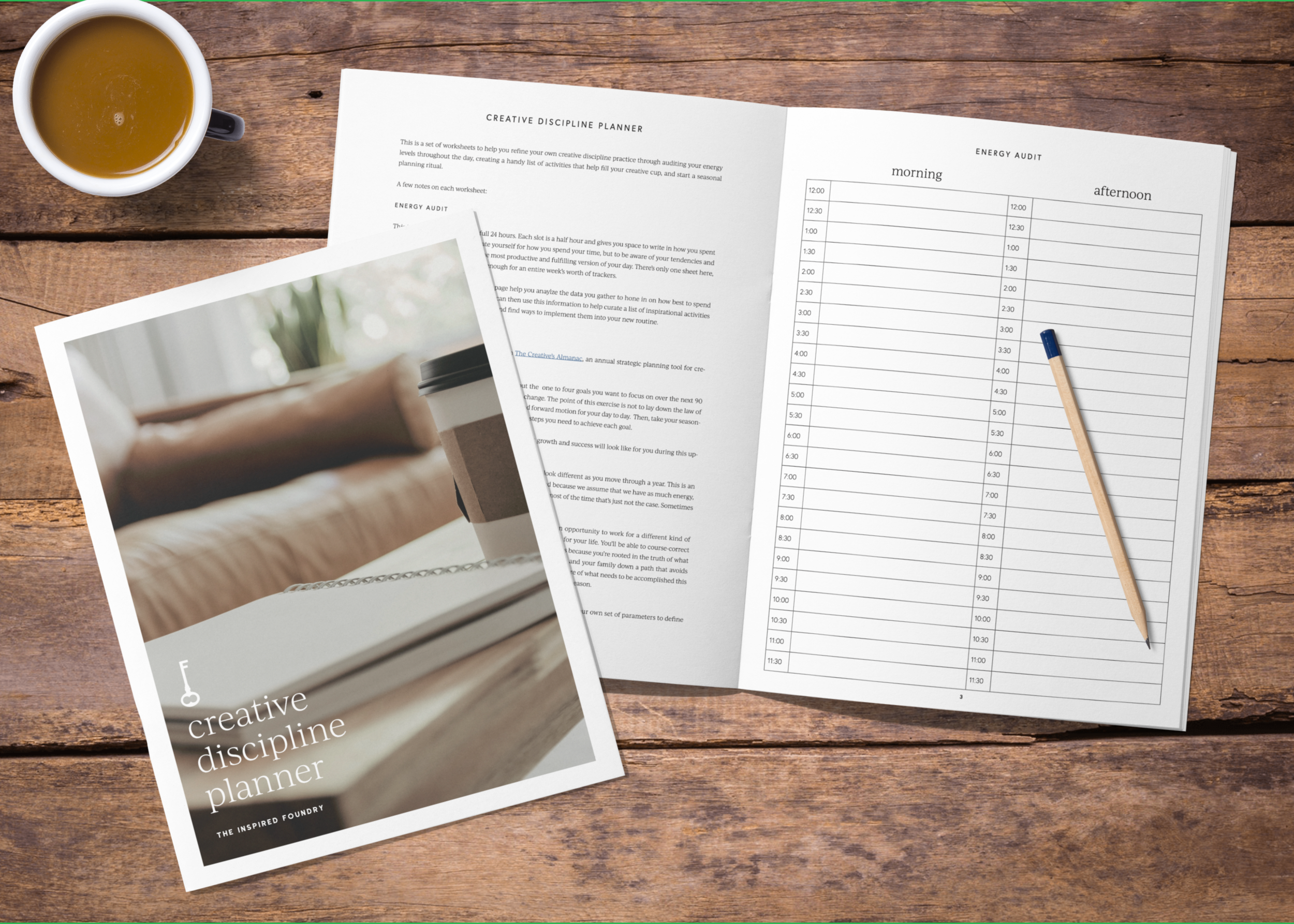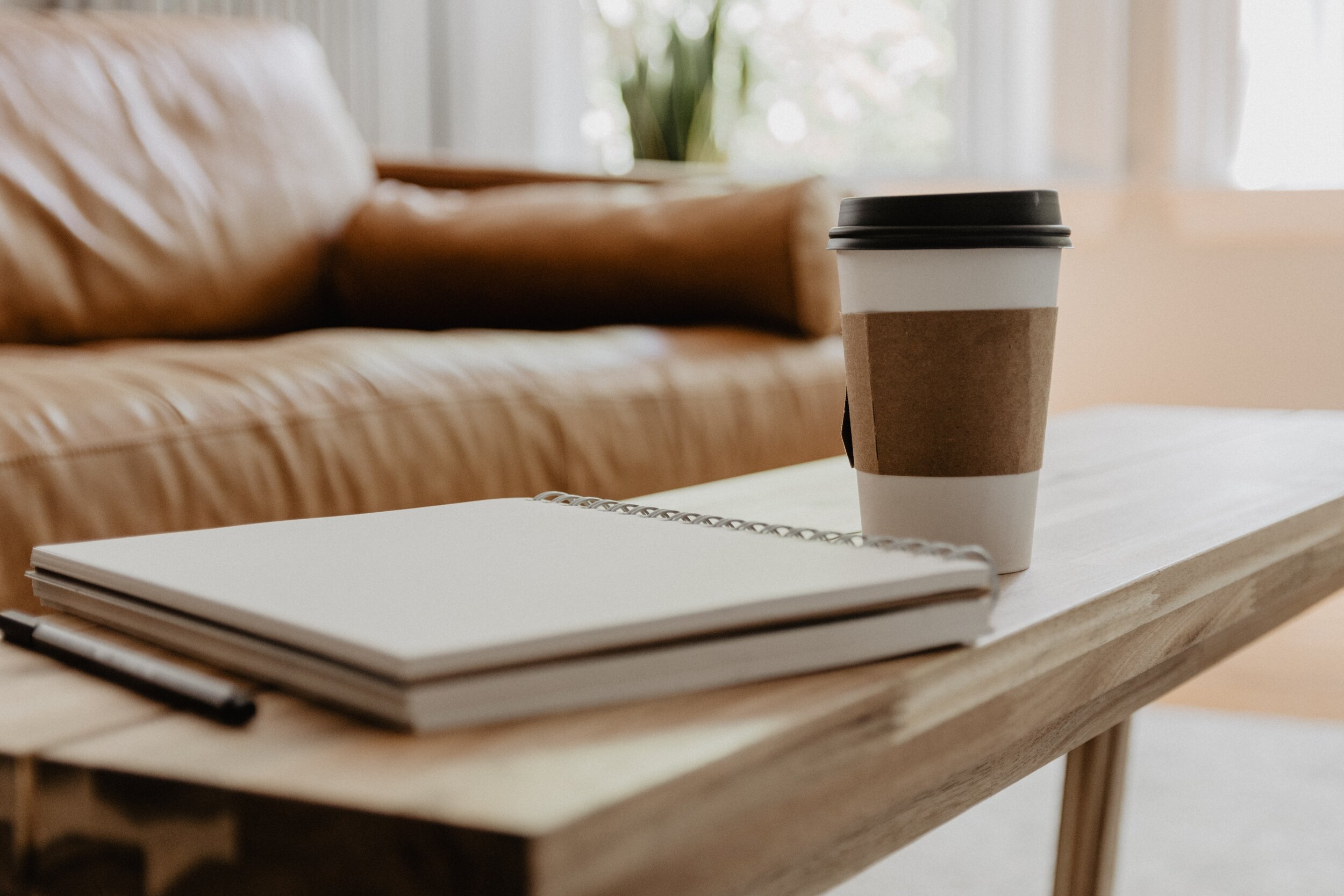I would just like to start out this post by saying that I’m writing this as much for me as I am for you. I am about 3 months into practicing some form of creative discipline for what is probably the first time ever in my life. I’ve been writing consistently, keeping up with social media, creating free resources, and still maintaining my typical work schedule. Granted, this is a slower season for me, but there are plenty of ways I could be wasting it away and instead, I’ve been focused on consistent output.
Discipline. Something I’ve never been strong at.
When I spoke with Joy Vetterlein a few weeks ago (go meet her and read about our conversation here), this topic of creative discipline came up towards the end of our conversation. And it got me thinking — what’s the impact on our own businesses if we practice creative discipline? How does that kind of consistency then end up creating an impact for the people we’re creating for?
Let’s explore this idea a bit.
WHAT IS CREATIVE DISCIPLINE
Here’s what creative discipline is not — it’s not something that just happens.
When we leave creativity to chance, there might be some really magical and creative moments that happen.
But without any kind of routine or practice around creativity, we’ll only be trying at every turn to force the magical moments to come back. Like, maybe you had this one really fantastic idea while you were walking along this particular path two miles from your house on a sunny day at 3pm. You might find yourself trying to desperately wait for the next sunny day at 3pm, hoping your creative muse will meet you along that same path.
Maybe that shit works for you. It has literally never once worked for me when I attempt to recreate the circumstances in which I once had a good idea, and I end up feeling disappointment and failure.
So rather than looking at creative inspiration through the lens of happenstance, what if we looked at it intuitively? What if the moments in which we had our best ideas, or felt like we were in the flow, or felt our most content were moments in which we were doing what came naturally? Moments where we weren’t expecting anything, forcing anything, or trying desperately to make something work?
What if we could create a practice of using our intuition to help us mine for creative nuggets or get our best work done? Then the circumstances don’t matter — where we were or what we ate for breakfast or whatever other superstition we have about our creativity could fall by the wayside and leave room for creativity to do its thing.
The thing about creative discipline is that it’s not asking you to only ever be creative when you’re in the flow or when you feel like it. It’s asking you to consider your own energy levels, the circumstances of your life, the obligations on your plate, and asking your intuitive self what you have the capacity for.
Creative discipline is a practice of honesty and intentionality. It’s not forcing a schedule, a particular way of doing things, or any sort of strategy that someone else gives you — it’s considering what you need, how you work best, and what you have the emotional and physical space to take on.
And if you’ve been trying everyone else’s way to create a morning routine, or a freelance work schedule, or time blocks or whatever, I encourage you to consider what has been working, what hasn’t been working, and what your creative self needs in order to do her best work.
Here’s what I’ve found out for myself:
BARRIERS TO CREATIVE DISCIPLINE
Perfectionism
Expecting things to go perfectly the first time. Assuming there’s only one way to achieve a goal and getting stuck when that one way doesn’t work. Consuming more than I create and therefore feeling like what I have to say doesn’t really matter if it’s not x, y, or z, or as good as that random person’s post I saw on IG.
Procrastination
Avoiding creating a schedule because I’m afraid it won’t work. Finding everything else in the world to do except the thing I need to do. Mindlessly scrolling.
Uprooting
Constantly starting a new project. Not sticking with the goals I set for myself because I get tired of them two weeks in. Coming up with new ideas for businesses because the one I’m currently working on isn’t “working.” Trying everyone else’s strategies for routines and schedules but never giving myself an opportunity to figure out what actually works for me (Thanks to Brianna Wiest for bringing this one to my attention).
STRATEGIES FOR CREATIVE DISCIPLINE
Seasonal Planning
Seasonal planning has been a game-changer. Every three months I create a new set of goals for what I want to work on over the next 90 days. Typically this flows from my new year planning ritual, The Creative’s Almanac, but you can start at any point.
Encouraging myself to focus on a few small goals over 90 days has led to consistency, focus, and stronger projects. I’m an idea person and I always want to execute an idea right away, so the challenge in seasonal planning is sticking to what I set out to do instead of switching gears every few weeks. It’s been worth it, though. I’m feeling a greater sense of impact on myself and on my business by taking things slower and not flying by the seat of my pants.
Auditing Energy Levels + Capacity
This one I’m still working on. But essentially it’s all about figuring out when is best for you to do the various kinds of work you need to do. There’s the mindless admin stuff, content creation, client work, creating products, etc. What times of day are you most energetic? Which of those tasks takes the most energy?
I’ve heard of people using their menstrual cycle to help them focus their productivity, but I’m not that hardcore yet. Right now I’m just still trying to figure out what my energy levels look like in the middle of a global pandemic, especially after we’ve been in this situation for almost a year.
You might also be like me and have several different jobs you’re balancing. Perhaps each one has its own set of tasks that require different energy output. What would it look like to track your time and energy for a week and figure out the circumstances in which you are at your best for each position?
There’s also a truth when you acknowledge that, in the words of Joy Vetterlein, your creativity is not a limitless pitcher. You need to take time to fill up your cup before you can pour it out again into your creative projects. Keep that in mind as you audit your energy levels and capacity.
Trust
Trust is my word of the year for 2021, so here’s another one I’m working on, but I have a sneaky feeling it might just be the key thing to really hone creative discipline.
There’s a trust that needs to be established when you do seasonal planning. You have to truly evaluate what you’re able to give in that particular season because life happens — don’t assume that the you of March will be able to handle the bright and shiny-eyed vision that the you of January dreamed up.
Taking stock of everything from family obligations, current global events, workload, etc. will allow you to paint an attainable picture of the next 90 days. Seasonal planning is not set in stone, but it is an attempt to set yourself up for success. You have to be willing to trust that you’re working on the right goals, even as you reach day 45 or day 72, and not give in to the temptation of throwing out your plan and starting over.
Trust seems to be the foundation of creative discipline: own how you feel, be honest about what you can realistically accomplish, and give yourself the grace to pick up and try again when you feel like you’ve fallen off the wagon.
To help you navigate your own creative discipline, I made you a creative discipline planner with a few exercises to help you figure out what creative discipline can look like in your own life. Find it in the Think Tank Library! Use the button below and add your email address to unlock the library!



+ COMMENTS